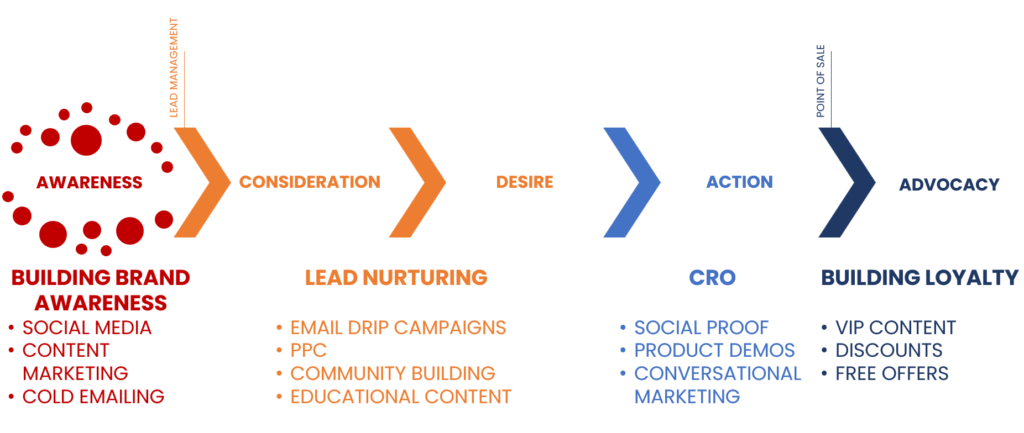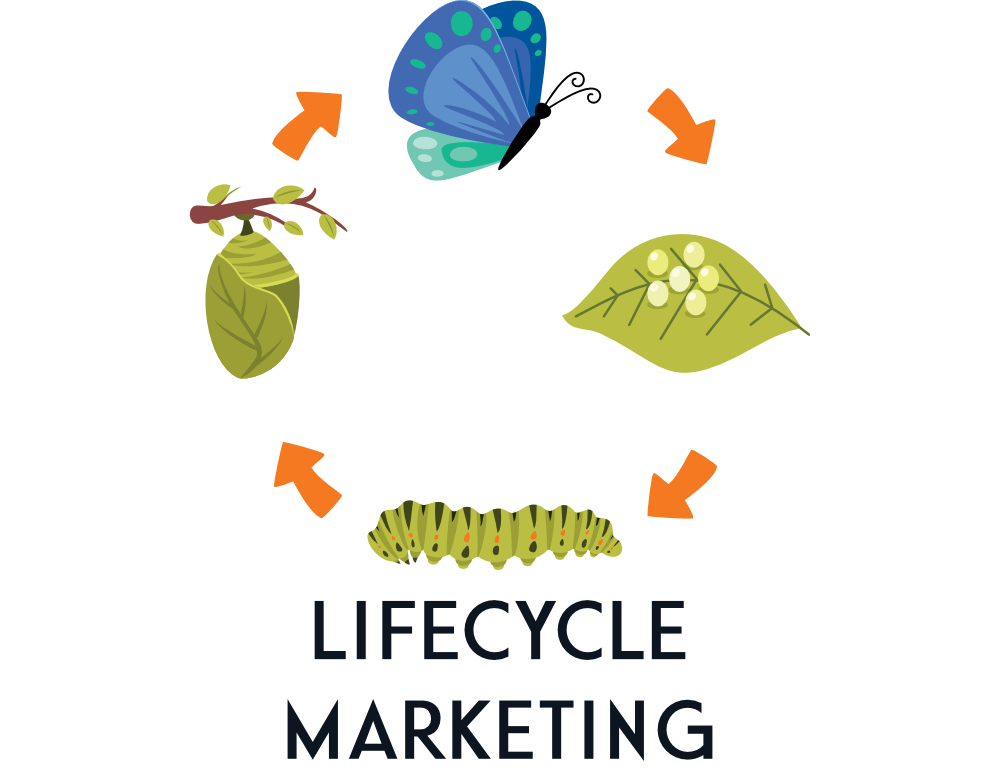Gone are the times where marketing was more about brand awareness then it was about building a relationship with your clients. Consumers are now hyper-aware now that information is available at the drop of a hat, which means priorities need to shift. And while brand awareness is still necessary, it’s not the end goal, nor will it make the sale.
If you are looking for long-term return on investment (ROI) from your marketing strategy, you need to be able to turn consumers into repeat buyers and brand ambassadors.
What is Lifecycle Marketing?
Lifecycle marketing is the process of creating and maintaining relationships with customers over the customer’s lifetime. It is an effective way to nurture customers through their journey with a business, from initial contact to eventual purchase and beyond. By using lifecycle marketing strategies, businesses can build customer loyalty and trust, increase sales, and generate repeat business.
Lifecycle marketing focuses on understanding customer needs and targeting your message accordingly. By taking into account a customer’s current stage in the buying cycle (e.g., awareness, consideration, evaluation, purchase) you can create tailored messages that are relevant to the individual customer’s needs. For example, if a customer is in the awareness phase of the buying cycle (they are just starting to research products or services), you could target them with educational content that helps them become more knowledgeable about what you offer.

At each stage in the lifecycle, you can use different tactics to keep customers engaged and interested in your products or services. These tactics could include email campaigns, content marketing (like blog posts or white papers), webinars/webinar series, social media campaigns, discounts/promotions for loyal customers, etc. The goal is to build relationships with customers by providing helpful information and resources that will keep them coming back for more.
What are the Benefits?
- Improved customer engagement: Lifecycle marketing helps you to create tailored, relevant content for customers at each stage of the customer journey, allowing you to better engage and interact with your target audience.
- Increased customer loyalty: By providing personalized content and services to customers throughout their lifecycle, you can cultivate a deeper connection with their customers and increase loyalty.
- Cost-effective marketing: Lifecycle marketing can help you save money on advertising and other costs associated with reaching potential customers.
- Increased ROI: By targeting customers at the right time in the purchase process, your business can more effectively convert leads into sales and generate a higher return on investment (ROI).
- Automation: Lifecycle marketing allows you to automate many aspects of your workflows, such as email campaigns or retargeting ads, freeing up time for other tasks such as product development or customer service activities.
- Cross-sell/upsell opportunities: With lifecycle marketing, businesses can identify opportunities for cross-selling or upselling existing products or services to existing customers to increase revenue and profitability.
- Greater personalization capabilities: With lifecycle marketing tools like predictive analytics, businesses can create more personalized content for each stage of the customer journey which increases engagement and conversion rates along the way.
If you’re looking to increase sales and improve customer retention rates, lifecycle marketing should be an important part of your overall digital marketing strategy. With thoughtful planning and execution of lifecycle marketing strategies, you can create a deeper connection with your customers which leads to higher satisfaction rates as well as increased retention rates over time—ultimately helping you reach their goals faster and more sustainably in the long run!
Ready to start your journey? Let’s talk!
